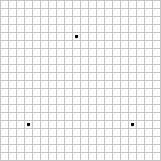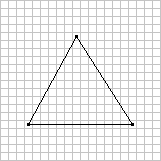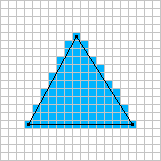Rasterization is the process of converting vector graphics, which are made up of lines and shapes, into raster graphics, which are made up of pixels.
In other words, rasterization, it’s the process of converting an image that is described using mathematical equations into an image that is made up of tiny squares of color.
Look at the below animation, it is made of tiny squares. But looks like a real scene.

The term “rasterization” comes from the fact that a raster image is made up of a grid or “raster” of pixels, while a vector image is made up of mathematical equations that describe the shape of the image. Rasterization is used in a wide variety of applications, including computer graphics, digital imaging, and video games.
The process of rasterization starts with a vector image, which is often created using specialized software like Adobe Illustrator or Inkscape. Vector images are made up of paths, which are lines and curves that define the shape of the image. The software uses these paths to create a raster image by filling in the pixels that make up the image.



The first step in the rasterization process is to determine the resolution of the final image. This is usually measured in pixels per inch (PPI) or dots per inch (DPI). The higher the resolution, the more detailed the image will be, but the larger the file size will be.
Once the resolution is determined, the software begins to fill in the pixels of the image. This is done by determining which pixels are inside the shape defined by the paths and which are outside the shape. Look at figure 3 above.
The pixels inside the shape are then colored according to the color of the path, while the pixels outside the shape are left blank or colored in with a background color.


One of the challenges of rasterization is that the resolution of the final image can affect the quality of the image. Look at the above two triangles. If the resolution is too low, the image will appear pixelated, with visible squares of color. If the resolution is too high, the file size will be very large, making it difficult to store or transmit the image.
Another challenge of rasterization is that it can be a computationally intensive process. This is especially true for complex images with many paths or shapes.
To speed up the process, some software uses algorithms to simplify the image by reducing the number of paths or shapes.
In addition to creating raster images from vector images, rasterization is also used in other contexts, such as in 3D computer graphics. In this case, rasterization is used to convert 3D models into 2D images that can be displayed on a screen or printed on paper.
Overall, rasterization is an important process in computer graphics and digital imaging, as it allows vector images to be converted into raster images that can be displayed on a screen or printed on paper. While it can be a computationally intensive process, it is essential for creating high-quality images that can be used in a variety of applications.
Leave a Reply